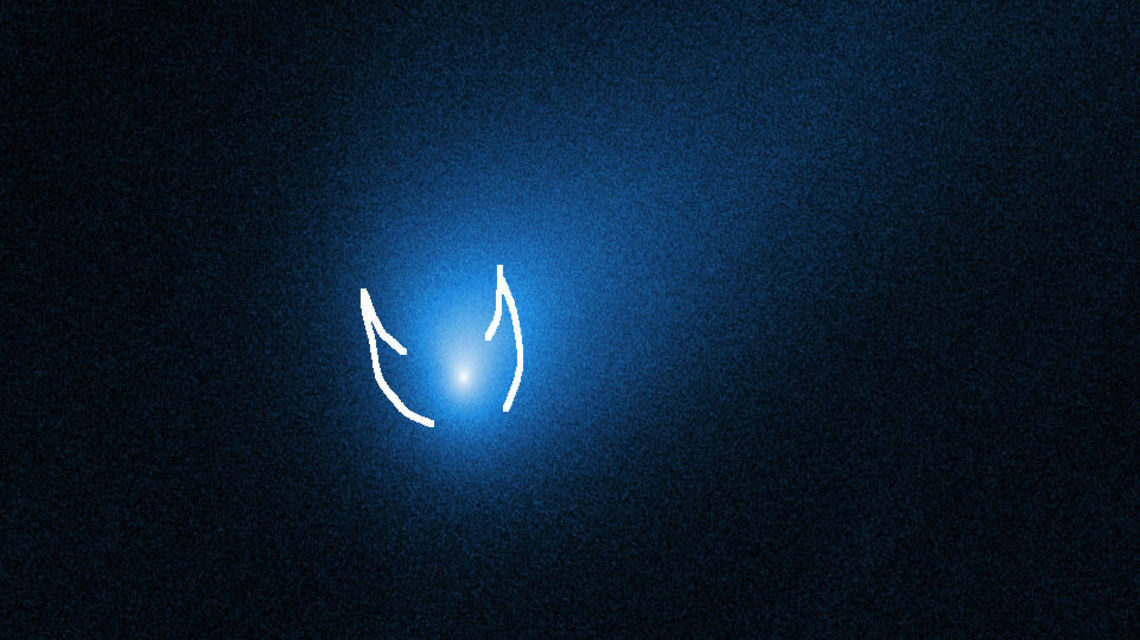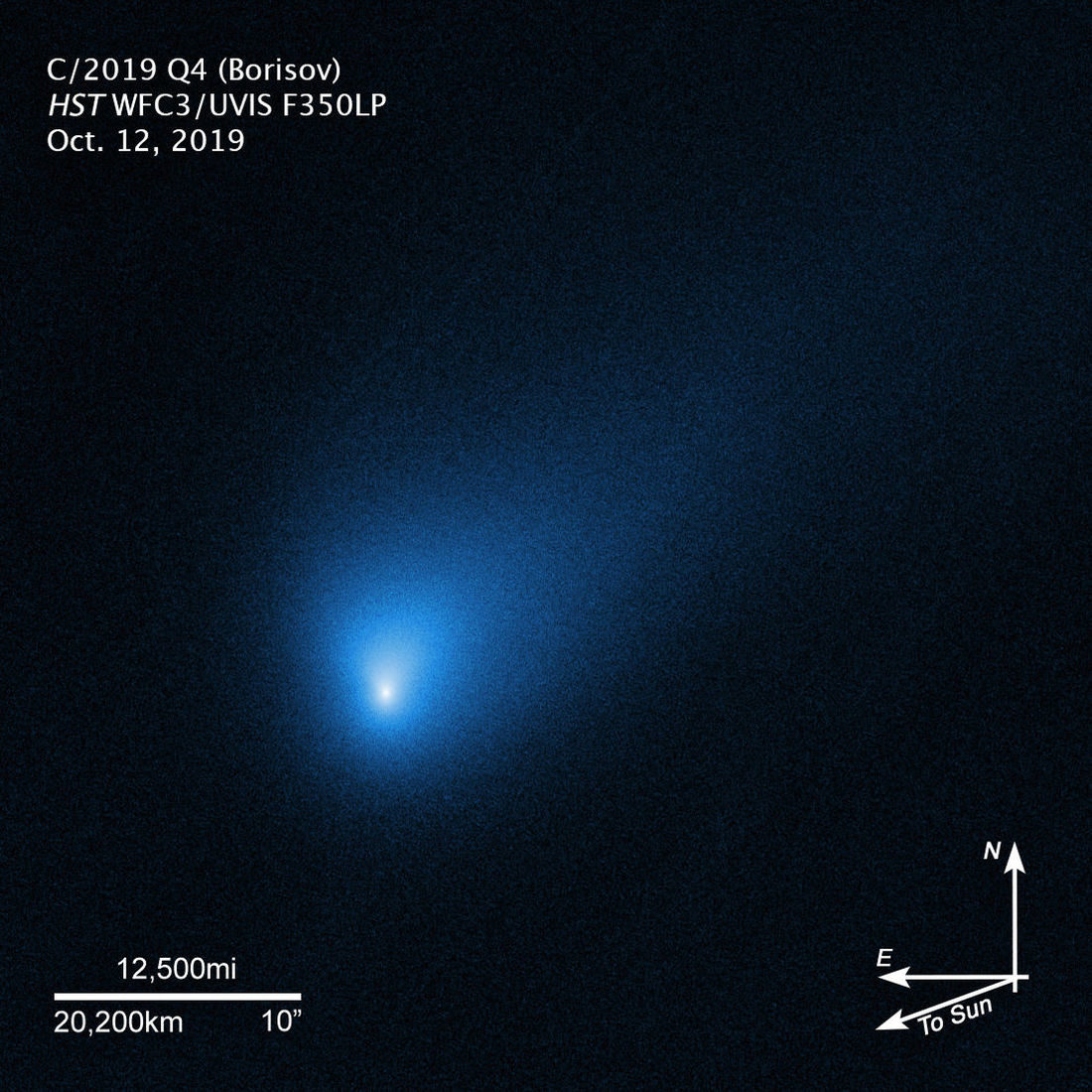
I'm starting to think 2I/Borisov is a fan of old sci-fi.
That's the interstellar comet discovered in September, screaming through the solar system on a trajectory that left little doubt it came from deep space, literally from another star. We're not sure precisely where it came from, but the idea is that it was a frozen dirt- and ice-ball orbiting another star and got ejected into the galaxy at large, possibly by encountering a planet in its home system. It's been barreling through space ever since, and just happened to be on a path that takes it relatively close to the Sun.
Comment: An important note on comets as detailed by Pierre Lescaudron in Earth Changes and The Human cosmic Connection:
Comets or Asteroids
The fundamental difference between asteroids and comets is not their chemical composition, i.e. dirty, fluffy icy comets vs. rocky asteroids. Rather, as has long been put forward by plasma theorists, what differentiates 'comets' from 'asteroids' is their electric activity.
When the electric potential difference between an asteroid and the surrounding plasma is not too high, the asteroid exhibits a dark discharge mode or no discharge at all. But when the potential difference is high enough, the asteroid switches to a glowing discharge mode. At this point the asteroid is a comet. From this perspective, a comet is simply a glowing asteroid and an asteroid is a non-glowing comet. Thus the very same body can, successively, be a comet, then an asteroid, then a comet, etc., depending on variations in the ambient electric field it is subjected to.
I was pretty excited when it was first seen, and to be truthful I still am.
... but there's a weird thing about this comet. Nothing about it is weird. In an update in September I talked about how the colors and spectrum of the comet made it look like pretty much any run-of-the-mill solar system comet. As it nears the Sun and warms up the ices on its surface and just below start to sublimate (turn into a gas), surrounding the comet and creating a tail. The gases seen are CN and C2, which are seen in nearly all of our own local artisanal comets. Even a Hubble image didn't show anything odd.
At least our first interstellar visitor, 'Oumuamua, had the decency to be fairly strange.

One very interesting bit they show is that the comet was actually found in images that precede the discovery by several months! Using the best calculations for its orbit, they traced where the comet was in the sky in the past and found that it was actually seen pre-discovery by the Zwicky Transient Facility (ZTF), an all-sky survey done using a 122-centimeter telescope at Palomar Observatory. ZTF observes huge parcels of the sky, looking for things that change either their brightness or position (what astronomers call transients), and sure enough 2I/Borisov was in ZTF images taken in March and May 2019.
That's important! In March the comet was 900 million kilometers from the Sun, and by May it had closed that distance to 760 million. That's pretty far, and the way a comet acts is different that far from the Sun where it's much colder.
At a distance from the Sun of less than 375 million km or so water dominates the brightness. Water ice heats up, turns into gas, and reflects sunlight efficiently. The comet is currently about 320 million km from the Sun, so for the past few months water has been a strong driver of its brightness.
But back in March and May, it was too far for this to be the case. However, looking at how the brightness of the comet has been increasing the past few months and running that backwards, they found that 2I was still much brighter than expected when it was that far from the Sun. That's more consistent with the comet emitting carbon monoxide (CO), which sublimates at a much lower temperature than water does. Even that far from the Sun, the comet was active, just due to a different molecule.
But — and stop me if you've heard this before — both water and CO are often major components of solar system comets. So even with this new data, the comet becomes even less weird, if that's possible.
One cool thing they were able to do is constrain the size of the comet's solid nucleus. This can be very hard to measure directly, because at distances of hundreds of millions of kilometers the nucleus appears tiny, and, worse, is obscured by the dust and gas blowing off it. Early estimates put it at about 6 km in diameter, but using high-resolution images from Keck and Hubble, the new research makes the diameter smaller, at 2-3 kilometers. For scale, the comet 67P/Churyumov-Gerasimenko, orbited by the Rosetta spacecraft back in 2014-2016, is about 4 km end-to-end, and the famous Comet Halley is about a dozen kilometers across. So 2I is a little bit on the small end but a size that is completely unsurprising for a comet.
They also report that they cannot measure the comet nucleus's rotation, because the obscuring material makes that impossible to detect. So if it spins anomalously slowly or rapidly, we can't know. But if I had to wager, I'd guess it spins at exactly the average rate solar system comets do. Why bet against the house?
So, in the end, this comet may be from an entirely different star system, but it doesn't look alien at all. Not even a nose ridge.
Which is still extremely cool. Why? Because it shows us that a fundamental principle of astronomy is true. Stated simply, it's that the rules here are the same as the rules everywhere. The same physics, the same chemistry, the same elements, the same processes — the ones we see all around us are the same ones occurring everywhere.
Now, that doesn't mean everything is exactly the same! After all, every game of poker is different, even though the rules are simple and the deck of cards the same. But that allows for a vast array of variations. Games of poker might be similar, but never precisely the same.
So it is with 2I/Borisov. It's extremely similar to comets made here, but I suspect that in detail it's different in many ways (like, say, elemental and isotopic abundances, which vary from place to place even in our solar system, let alone in others). That's difficult to study, but perhaps the next time we see an alien visitor like this the ESA's Comet Interceptor mission will be ready to fly. Studying one of these up close may prove that it really is different.
Or maybe it's different underneath. After all, the Doctor looks human but has two hearts. And travels the Universe, ancient and world-weary, passing through but never staying long...
Hmmmm. Maybe I've been thinking of the wrong show here.
Phil Plait @BadAstronomer



Comment: See also:
- Planet-X, Comets and Earth Changes by J.M. McCanney
- Comet 67P surprises scientists with 'bright outbursts', collapsing cliffs and rolling boulders during Rosetta mission
- Asteroid Ryugu is surprisingly dry, Japanese spacecraft finds
- Water in Saturn's rings surprisingly like that on Earth, except for moon Phoebe
- C/2019 Q4: ANOTHER interstellar object to pass through our solar system
- Incoming! Five asteroids flew past Earth Friday - one twice as big as Empire State Building
And check out SOTT radio's: